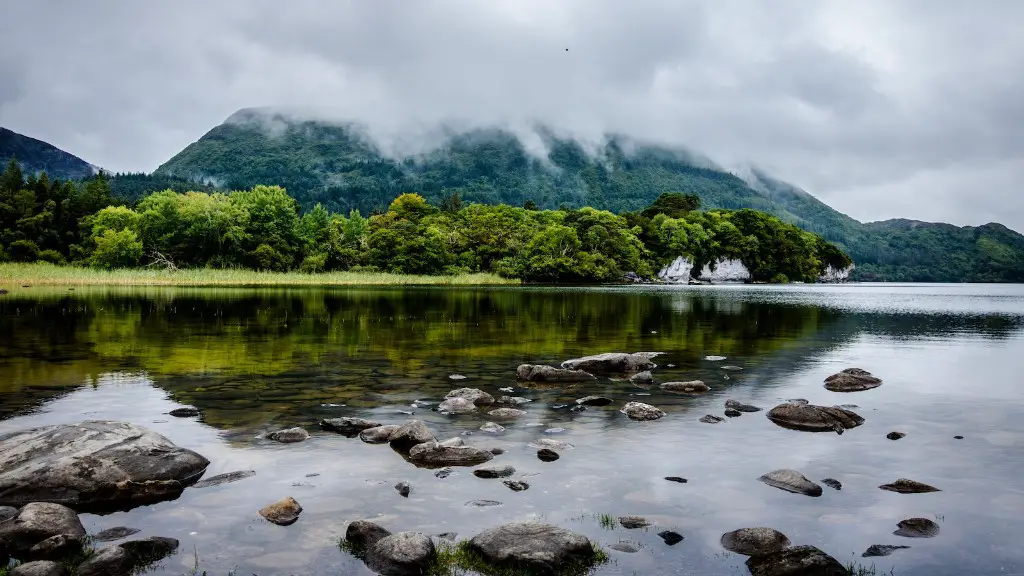History and Origin
The Mississippi River is one of the world’s premier waterways. It is the fourth longest river in North America, with a length of 2,300 miles or 3,700 kilometers. The mighty Mississippi begins its journey in Minnesota and flows south, eventually dumping into the Gulf of Mexico. It drains approximately one-third of the continental United States, serves as a powerful resource for commerce and industry, and is home to many different species of wildlife.
The Mississippi River has a storied past. Some of the first Europeans to explore the region were Jacques Marquette and Louis Jolliet in 1673. They traveled part of the way down the river and reported back on their findings. The river has played many roles in United States history, including use as a major transportation route for settlers moving west, a site of major battles during the Civil War, and much more.
River Characteristics
The Mississippi River is a very powerful river. It has the third largest drainage basin in the world, and it carries more water than any other river in North America. The Mississippi’s average flow rate is 600,000 cubic feet per second and its peak flow rate is 1.7 million cubic feet per second. Its main tributary is the Missouri River, which has a length almost double that of the Mississippi, and helps to further shape this impressive river.
The Mississippi River contains large deposits of sediment from its many tributaries, and has a wide, muddy-brown appearance. Its pH level is 6.5, which is slightly acidic, and its temperature ranges from 38 to 80 degrees Fahrenheit. Its depth varies, ranging anywhere from a few feet to 200 feet in certain places.
Ecology and Wildlife
The Mississippi River is a major source of fish and other forms of aquatic life. Species like paddlefish, blue catfish, walleye, and Asian carp are all commonly found in the river. The river is also home to more than 300 species of birds, including great blue herons, bald eagles, ospreys, and kingfishers. In addition, numerous species of mammals, reptiles, amphibians, and invertebrates inhabit the banks of the Mississippi.
The Mississippi River is an important habitat for many species of wildlife. Its wetlands provide refuge for migrating birds and its wide expanse of open water provides food and shelter for hundreds of species of fish and aquatic life. It is also a popular destination for wildlife enthusiasts and birdwatchers, who use the river to observe a variety of animals in their natural environment.
Uses
The Mississippi River has a variety of uses. It is used for drinking water, irrigation, power generation, navigation, recreation, and more. It also serves as an important transport route for goods, including corn, coal, steel, and petroleum products. Hundreds of barges move along the river every day, bringing needed supplies to many different towns and cities.
In addition, the Mississippi River is essential for the economy of many of the towns and cities that line its banks. The river provides employment for fishermen and other water-dependent industries, and tourism is a major industry along the river. From the vibrant music scene of New Orleans to the towering bluffs of national park recreation areas, the Mississippi River provides countless opportunities for exploration and leisure.
Environmental Protection
The Mississippi River is an important ecosystem that requires protection. Environmental groups and governments have taken steps to help protect the river, such as the adoption of more stringent water pollution laws and efforts to conserve wildlife habitats. In addition, some communities along the river have developed green space along its banks to protect shoreline areas and create a buffer between the river and urban development.
The Mississippi River is a powerful and valuable resource. Its many uses, and its importance as a habitat for countless species of wildlife, make it an invaluable asset to both the people and the environment of North America.
Impact on Weather and Climate
The Mississippi River plays an important role in the climate and weather patterns of the United States. Its warm waters act as a heat sink, trapping and releasing heat and moisture back into the atmosphere. This helps to regulate temperatures and drive weather patterns, particularly in the Midwest and South.
The river is also important for its ability to release heat into the atmosphere. In particular, thunderstorms and tornadoes often form during the summer months due to the large amounts of heat released from the river. This in turn can lead to more violent and damaging storms, making the river’s ability to regulate and influence weather even more important.
Pollution of the Mississippi River
The Mississippi River is vulnerable to a variety of pollutants, including industrial waste, agricultural runoff, and sewage. These pollutants can be hazardous to the health of the environment, as well as the people who live along the river. In addition to damaging fish and wildlife habitats, these pollutants can make the river unsafe for human consumption.
In recent years, there has been an increase in efforts to protect the Mississippi River from pollutants. Various organizations, such as the Environmental Protection Agency, have launched initiatives to reduce the amount of pollutants entering the river. Additionally, several states have implemented their own pollution mitigation measures, such as water treatment plants and sewage treatment facilities.
Conclusion
The Mississippi River is a vital part of the North American landscape. It is a long, powerful waterway with a rich history and is home to many different species of wildlife. Its depth, width, and flow rate make it a unique and impressive resource, and it serves a multitude of uses. While the river faces threats from pollution, efforts are underway to help protect this important ecosystem.



